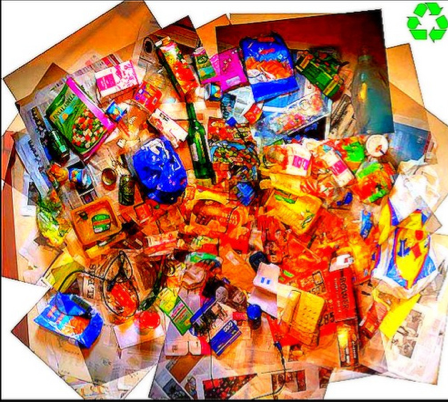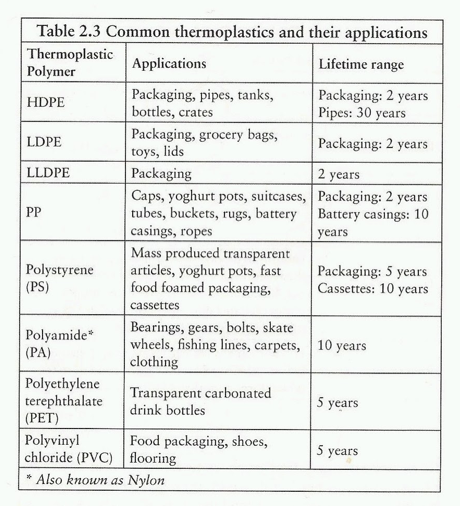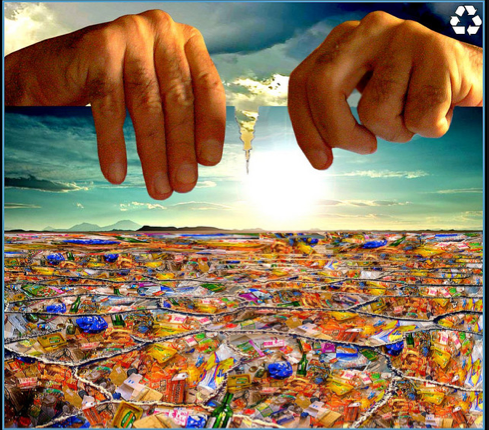Recycling Plastics Scandals
Vanessa Clemente
 Image source: Flickr, recicla, 2008.
Image source: Flickr, recicla, 2008.
Recycling has long been the focal point of the environmental movement, a movement that started over 30 years ago as a response to the world's problem of depleting resources. Reducing toxins and chemicals in our already abundant amounts of garbage is a worthy objective. Recently, the process of recycling has been put to the test, and some recycling agencies in Montreal have been found guilty of giving away their potential recycled waste to city dumps and landfills. I will briefly describe the recycling process - for the sake of this essay, I will speak only of plastics recycling - flaws within this process, and present newspaper articles from Montreal detailing the truth behind our recycling plants, along with a potential plan for the government, in order to prevent this from happening again.
Considering Canada's waste each year is equal to 54 million cubic meters, it's no wonder Canadians choose to recycle. (Seymour, p.9) It started in the 1980s, when the Canadian government sponsored a nation-wide recycling program where consumers would be responsible for sorting their waste and reducing the sizes of landfills (Dewess, Hares, p. 21). Now, thirty years later, the recycling industry in Canada is still thriving, with major corporations jumping onto the 'green' bandwagon, vowing to recycle more and participate in 'greener' activities and practices.
Many companies would not exist today were it not for the recycling industry and its many steps, practices and procedures. The recycling process begins by gathering all the plastics together and putting them through a cleaning device which rids them of all bacteria and foreign bodies like glue residue and labels. Afterwards, plastics are separated into two different categories: heterogeneous plastics and selected plastics, which can be separated manually or with mechanical devices. Heterogeneous plastics include all plastics of any kind, while selected plastics are were sorted through. The plastics are then sent to machines, which either shred them into tiny pellets, or melt them at a specific temperature so as to create one homogeneous mixture. From this moment on, plastics can be cooled and molded into practically anything (Chanda, Roy, p. 2-2).
As effortless as the above procedure may sound, it is not entirely truthful. Plastics' recycling isn't that easy, which makes everyday, home-scale recycling that much more difficult. Different types of plastics require different boiling points. Before continuing, let us go over the different types of plastics we may find in day-to-day plastic wastes in an average household. For the sake of argument, we will focus on thermoplastics, which are plastics that melt under heat and solidify when cooled, as opposed to certain plastics, which just simply break under the same conditions (Goodship, p. 15). Here is a chart detailing the different thermoplastics, their common uses, and their lifetime range:

As seen here, there are many different kinds of thermoplastics found in our recycle bins. If each plastic burns at different temperatures, what happens when they're mixed together and melted? Vannessa Goodship answers this in her book "Introduction to Plastics Recycling":
Once a polymer is
heated above the melting point the viscosity will decrease as the
temperature increases. The rate of this change varies, according to the
particular types
of material. Eventually the polymers will reach a point where they become
thermally
unstable and start to degrade. Generally, this shows itself as a
discolouration with the
melt turning yellow or brown. This can be a problem when processing mixed
plastic
fractions, because of the difference in processing temperature required,
melting the
various fractions contained in a heterogeneous mixture.
This discolouration can potentially ruin an entire batch of melted recycled plastics which could've been turned into a new bundle of plastic bottles, bags, and containers. It is because of this potential "contamination" within a heterogeneous batch of melted plastic that makes recycling much harder than it seems (Goodship, p. 15).
Another example of different plastics, which cannot be mixed together, is that of clear plastic versus solid, coloured plastic, in this case, yogurt containers. One company, which is trying to reduce the impact of this potentially devastating aspect of plastics recycling, is TerraCycle. They describe themselves in the following way:
TerraCycle makes
affordable, eco-friendly products from a wide range of different
non-recyclable waste materials. With over 50 products available at major
retailers like
Walmart, Target, The Home Depot, OfficeMax, Petco and Whole Foods Market,
TerraCycle
is one of the fastest growing eco-friendly manufacturers in the world.
Our hope is to
eliminate the idea of waste by finding innovative, unique uses for materials
others deem
garbage. (Terracycle.net)
Although this is all very informative, how can we possibly relay this information to the public? Convincing people to just simply start recycling is hard enough, but how can we introduce them to the concept of plastic diversification and the need to separate different plastics without causing any confusion? Yes, companies like TerraCycle do exist, and help alleviate the concerns some people have about recyclable and non-recyclable plastics, but the problem lies in the attitude of the public towards recycling in general. An example of this comes from Ohio, in 1996. To get consumers to increase their spending on recycled goods, rather than regular non-recycled products, the state of Ohio spent millions of dollars advertising a 'Get in the Loop' campaign. Points of sales which took part saw an increase in sales of recycled products. However, "even though sales were increased, staff that participated in the Ohio study observed that many consumers neither understood what a recycled content product was nor that buying such products had economic and environmental benefits." (Shaw, p.698) A lack of education on the topic of sustainability and recycling seems to be contributing to difficulties of the recycling industry.
To contribute to this education problem within the recycling industry, Montreal has recently been the subject of a recycling plant 'scandal' of sorts. On October 21st, 2010, the Journal de Quebec and Journal de Montreal both had the same article about how ¼ of our recycled waste actually ends up in landfills. The article claims that this number makes up 10% of what is either rejected from the recycling plant, or objects which were incorrectly sorted at the plant. According to the report this is because some of Quebec's recycling plants don't have specific quality control standards put into place, and no one to supervise that any rules are being followed, as well as an interest from Chinese buyers who will buy anything simply because China is lacking in raw materials. It is because of the lack of standards of quality control that force recycled waste to undergo a second sorting process which is sometimes too labour intensive and expensive, therefore giving recycling plants no other choice but to send the waste to landfills. (Journal de Quebec) To make matters worse, the president of Recyc RPM, a local recycling plant, says that the "blue boxes outside the homes looks great, but people don't question what happens afterwards". (Free translation of Journal de Quebec article.) He goes on to say how the province of Quebec keeps praising recycling, claiming that it is great and grand, but the industry seems to be disappearing, especially after the closure of more than half of Quebec's recycling plants in the past four years. (Journal de Quebec) With such a bad reputation, one must ask oneself what exactly should be done to prevent this from happening in the rest of Canada?
Unfortunately, there seems to be a lack of information on the impact of the government on Canadian recycling initiatives. From what was found, this resonated the most: "Federal, provincial and municipal governments all have opportunities to develop and implement 'green procurement practices' to help encourage marketing of value-added products produced from hazardous wastes/recyclables. Recycled products often have the TerraChoice organization certification of Products and Services such as the globally recognized Environmental Choice Program which certifies more than 3000 goods and services for a variety of industrial sectors." (Webster, p.788) Considering Canada's consistent reluctance towards environmental affairs, like a lack of interest in the Kyoto protocol and a reluctance to end seal clubbing, this seems to be a step in the right direction, seeing as it would certainly make things easier for consumers.
Looking back on this essay, the main argument seems to be the lack of information that consumers must deal with about recycling. If it truly is environmentally and economically beneficial, it is the government's duty to rightfully inform the public about the advantages of recycling. "All levels of Government should re-evaluate the ways they consider the value of proper waste technologies in their fiscal policies to better encourage environmentally sustainable technology development and implementation." (Webster, p.788) A certain amount of transparency would also be beneficial, as the public can be made aware of flaws in the recycling system, but can also see the steps, which can hopefully be taken in order to rectify these flaws.
In conclusion, recycling is a multistep system appreciated and used by most members of today's urban societies. Plastics recycling require special care as they are sorted and melted differently and any remnants of other plastics can contaminate a potential batch of new plastic. Because this step isn't well known to most people, when a recycling scandal shows up in the media, people tend to lose faith in the recycling system. A new education program sponsored by the government would educate people of the importance of recycling, and how properly sorting their waste and knowing more about the recycling process itself will allow consumers to better choose what will happen to their household wastes.

Image source: Flickr, The Earth Needs You, 2008.
_(N.B.: Please refer to 'Bibliography' post for works cited. Note that annotations following bibliographic entries have been removed for this final draft.)
Leave a comment